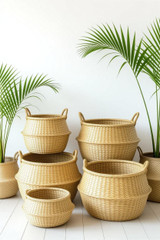"Firoozeh Koobi: The Art of Turquoise Inlay on Metal"
"Firoozeh Koobi: The Art of Turquoise Inlay on Metal"
Firoozeh Koobi, also known as turquoise inlay, is a traditional form of Iranian art that involves the inlay of turquoise stones onto a variety of surfaces, including wood, metal, and stone. This ancient craft has been practiced in Iran for centuries and continues to be an important part of the country's cultural heritage.
In this article, we will explore the history of Firoozeh Koobi, the techniques involved in this craft, and the significance of this art form in Iranian culture.
History of Firoozeh Koobi
The use of turquoise inlay in Iran can be traced back to the Achaemenid Empire (550-330 BCE), where it was used to decorate royal palaces and other important buildings. The art form continued to flourish during the Sassanian Empire (224-651 CE), where it was used to adorn the crowns and thrones of the ruling monarchs.
During the Islamic period, Firoozeh Koobi continued to be a popular decorative art form, with many mosques and other religious buildings featuring intricate turquoise inlay designs. The art form also spread to other parts of the Islamic world, including India, Central Asia, and Turkey.
In Iran today, Firoozeh Koobi is still widely practiced, with many skilled artisans carrying on the tradition of this ancient craft.
Techniques of Firoozeh Koobi
Firoozeh Koobi involves the inlay of small pieces of turquoise onto a variety of surfaces, including wood, metal, and stone. The process begins with the selection of high-quality turquoise stones, which are then cut into small pieces and shaped into the desired size and shape.
Next, a design is created on the surface to be inlaid, either by carving the surface or by using a stencil. The artisan then carefully places each piece of turquoise into the design, using a special adhesive to hold the stones in place.
Once the design is complete, the surface is sanded and polished to create a smooth finish. The result is a beautiful and intricate work of art that showcases the natural beauty of the turquoise stone.
Significance of Firoozeh Koobi in Iranian Culture
Firoozeh Koobi is an important part of Iranian culture, with many examples of this art form found in mosques, palaces, and other important buildings throughout the country. The use of turquoise inlay is seen as a symbol of luxury and prestige, and is often used to decorate the thrones and crowns of rulers and other important figures.
In addition to its decorative value, Firoozeh Koobi is also considered to have spiritual significance in Iranian culture. Turquoise is believed to have protective properties and is often used in amulets and other religious objects. The use of turquoise in Firoozeh Koobi is seen as a way to infuse the object with spiritual power and protection.
Today, Firoozeh Koobi continues to be an important part of Iranian culture, with many artisans carrying on the tradition of this ancient craft. The beauty and intricacy of Firoozeh Koobi designs continue to captivate people around the world, and the use of turquoise inlay remains an enduring symbol of Iranian art and culture.
Recent Posts
-
Order the Best Boss Day Gifts for Male & Female Bosses in the UAE from Craftihouse.com
Every year, Boss’s Day is the perfect opportunity to show appreciation for the people who lead, ment …13th Oct 2025 -
How This Gift Came to Life: The Story Behind Our Palm Leaf Baskets
How This Gift Came to Life: The Story Behind Our Palm Leaf Baskets In a world where everything is be …8th Oct 2025 -
Handmade Leather Key Chains – Timeless Souvenirs & Everyday Companions
Handmade Leather Key Chains – Timeless Souvenirs & Everyday Companions Introduction In a world where …25th Sep 2025



